Jan 2, 2025
Understanding Teenagers’ Sleep Patterns: The Role of Circadian Rhythms
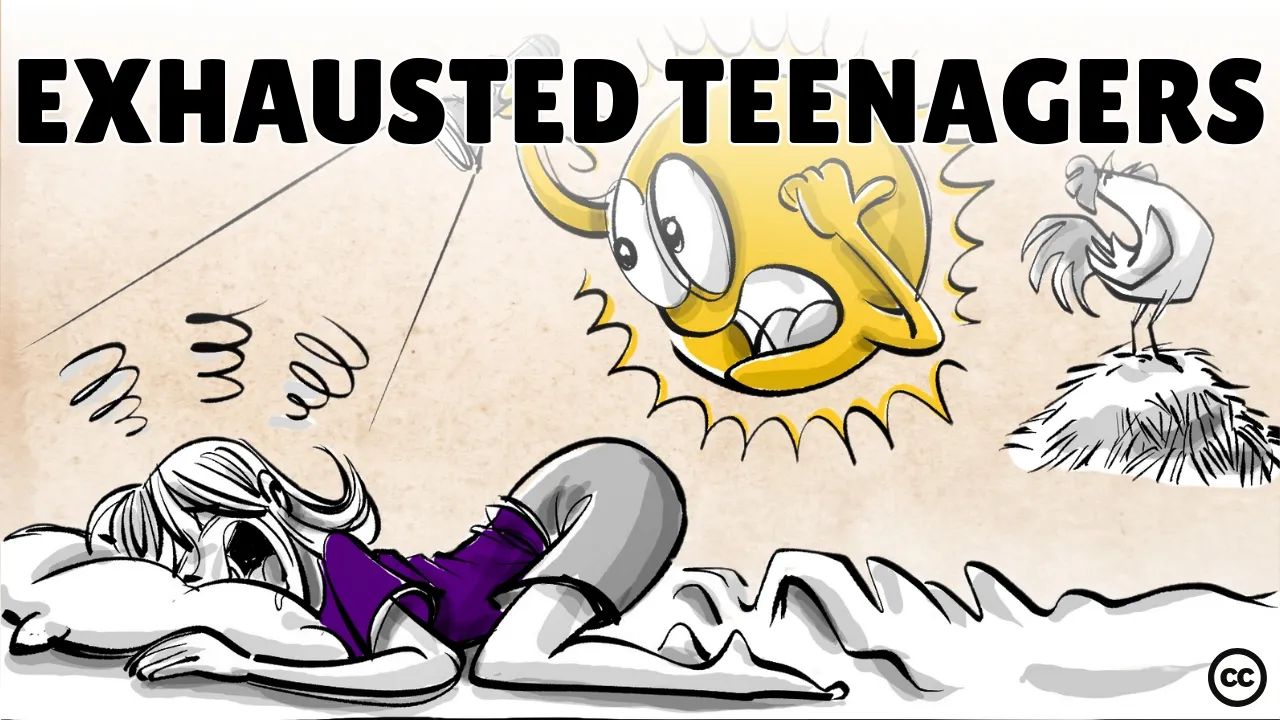
Introduction
As humans, we spend roughly a third of our lives asleep. When there is natural light, we wake up, and at night we feel drowsy. This phenomenon is called the body's "day and night" cycle or the circadian rhythm. Circadian rhythms control how we sleep and when we wake up. They are managed by the rise and fall of certain chemicals such as the hormones melatonin and cortisol, and the neurotransmitter adenosine.
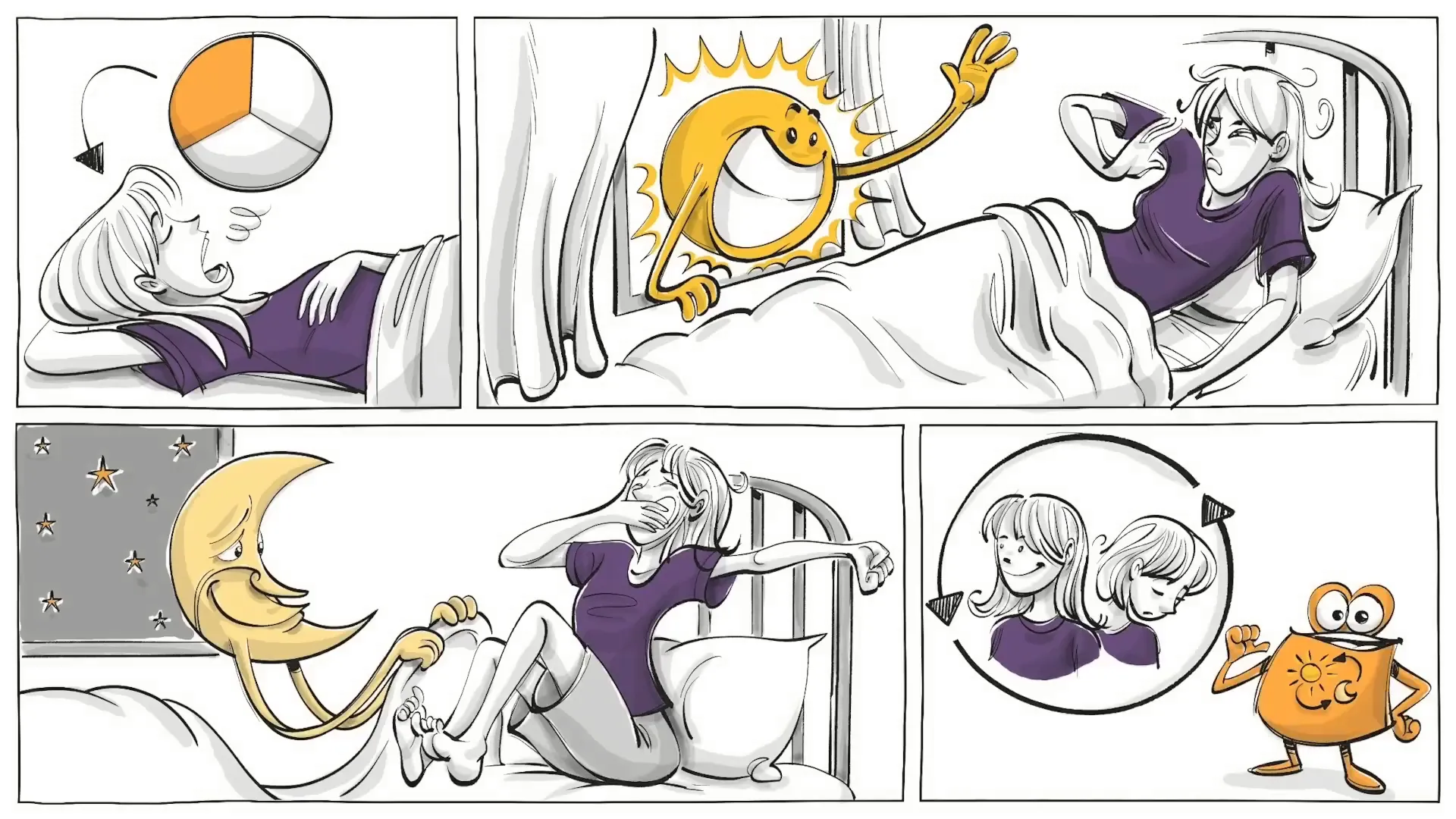
Circadian Rhythms
Melatonin, for example, is sensitive to light, increases with darkness, and helps us to settle into a deep sleep. Cortisol spikes in the middle of the night and causes REM sleep—the phase where we dream—and then wakes us up. Adenosine builds up during the day, gradually reducing our alertness, and eventually makes us feel tired. Over 24 hours, the changes in melatonin, cortisol, and adenosine typically look like this. However, while people all have different circadian rhythms, known as different chronotypes, the rhythm itself shifts as we grow up and age.
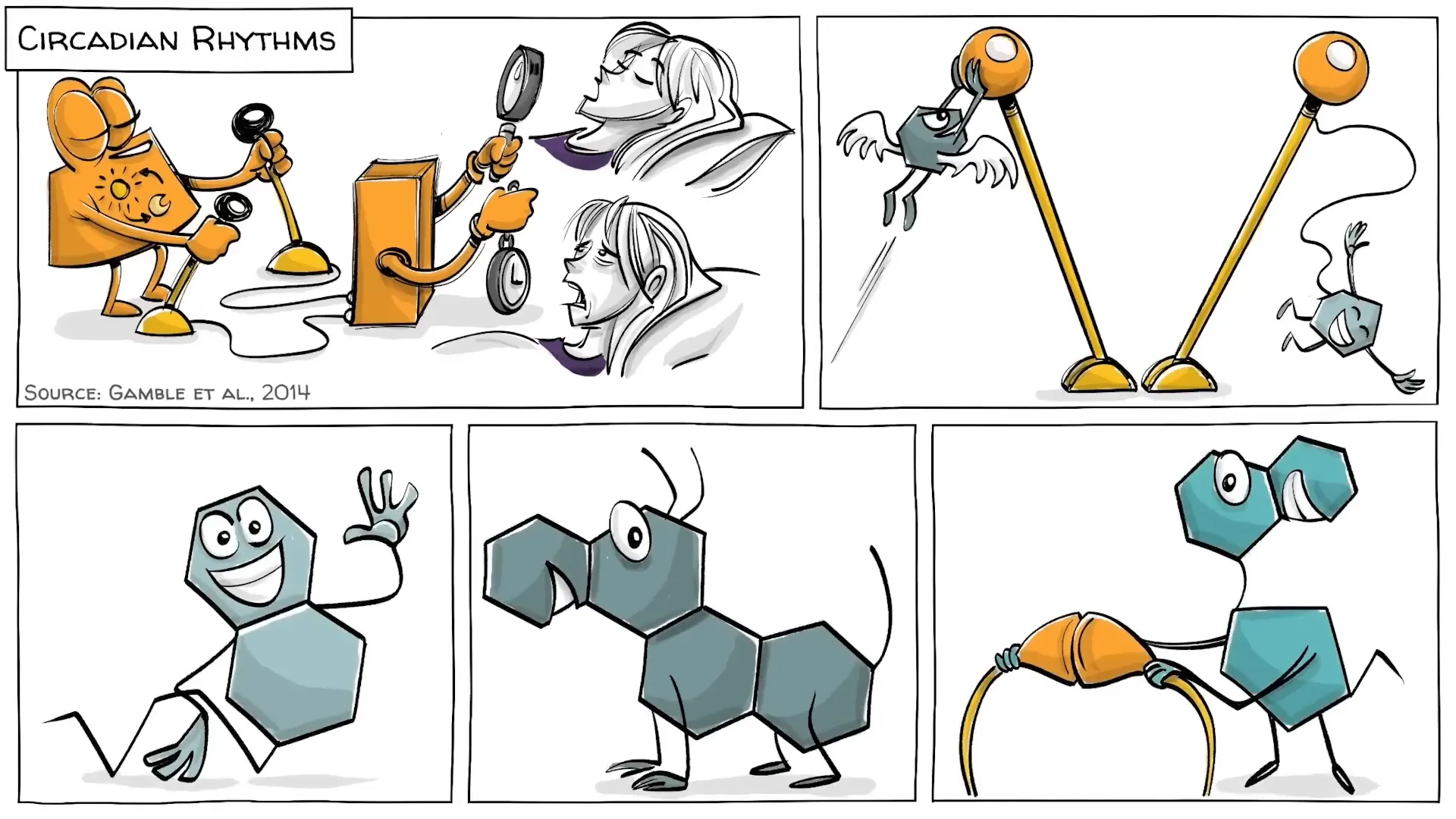
Hormones’ Roles
Children are typically born with an early circadian rhythm, but when they enter puberty, their melatonin and cortisol kick in later. As a result, their bodies react less to light and get sleepy about 2 hours later. They enter into what's known as a delayed sleep phase.
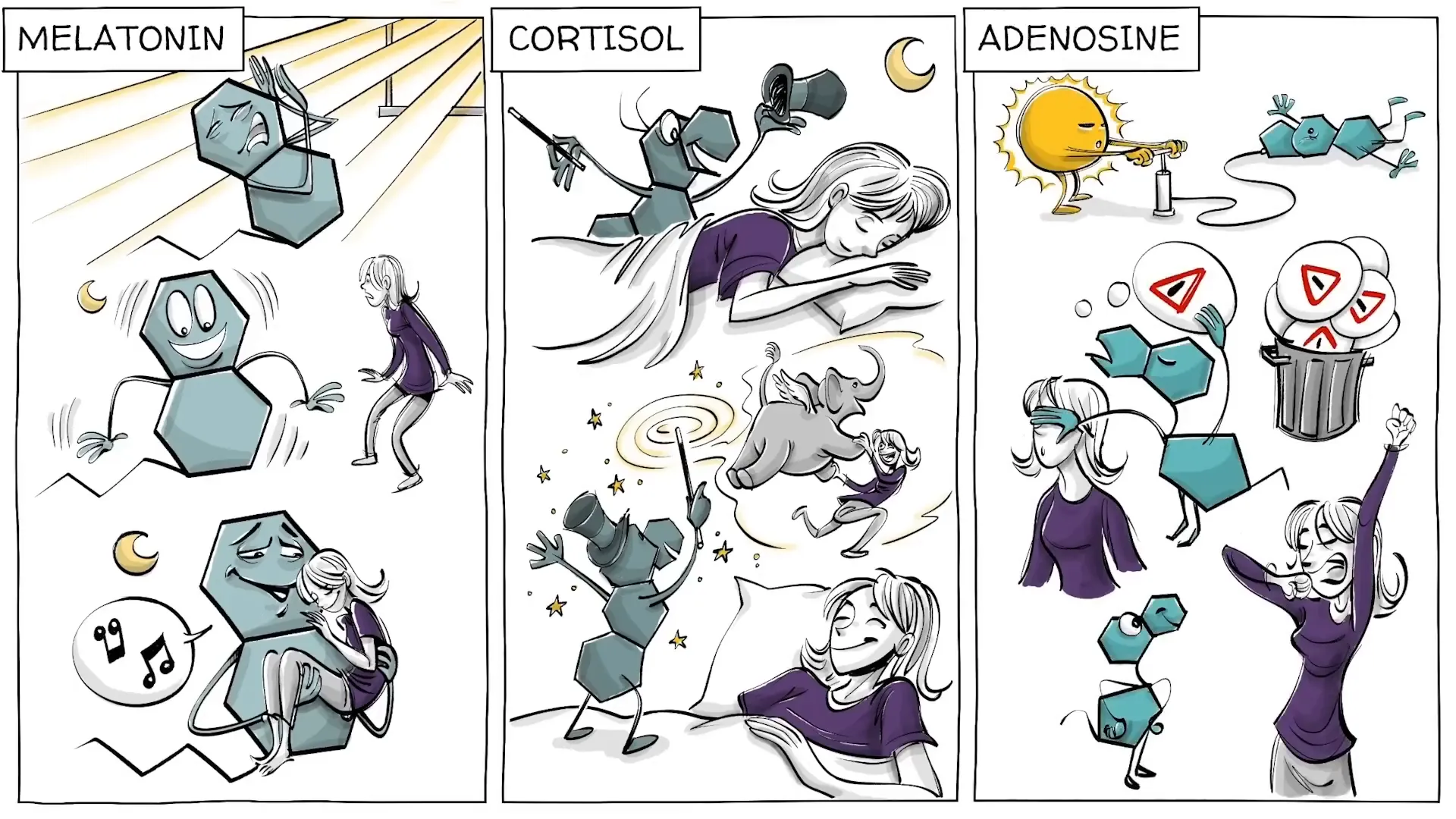
Circadian Shifts
Since most schools don’t adapt to this change, teenagers end up sleeping less during weekdays and more during weekends—a phenomenon known as social jet lag. This leads to all kinds of problems. When teenagers lack rest, their minds have trouble paying attention and absorbing new knowledge, and they often cannot remember what they have learned during the day. This is because sleep is essential for consolidating our experiences into our long-term memory store.
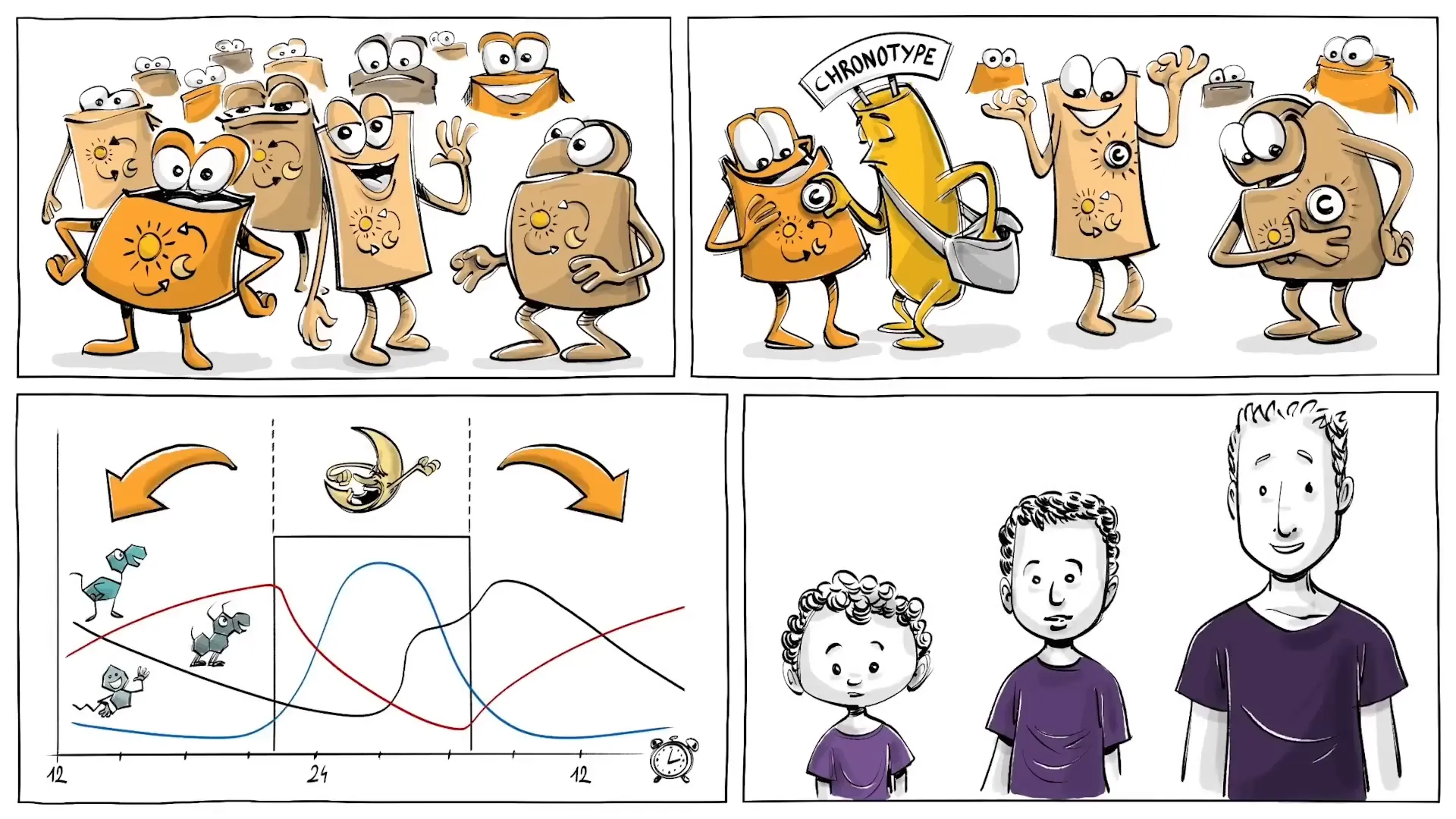
Social Jet Lag
Teenagers naturally go through a period of lots of new sensations and often face an identity crisis. Those who sleep less naturally also have less REM sleep—the phase where we dream—and that helps us regulate emotions. A lack of REM sleep might make them extra sensitive, moody, or unable to understand their own feelings.

Affect on Teenagers
A lack of rest leads to more stress during the day, which in turn can mean insomnia at night—a vicious cycle that can hit adolescents who are naturally more tense. In the best case, the stress impairs their creativity, but at worst, it leads to anxiety or addictions. This may be one reason why research shows that teenage suicide rates go up when a new school year starts.
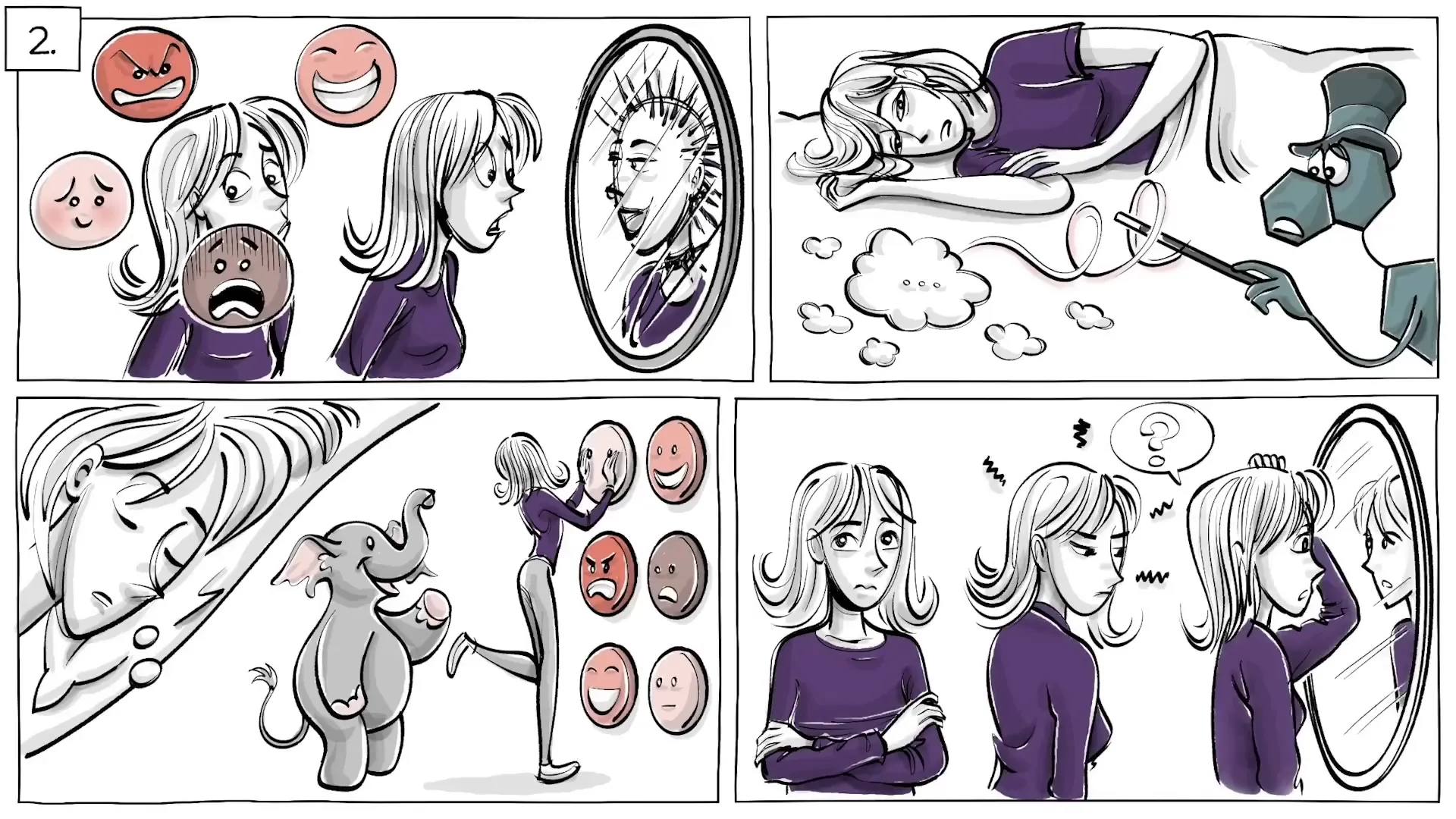
Stress, Sleep and Mental Health
Sleep also regulates the hormones responsible for our appetite. When teenagers don’t rest enough at night, they tend to eat more during the day. The result can be obesity or eating disorders.
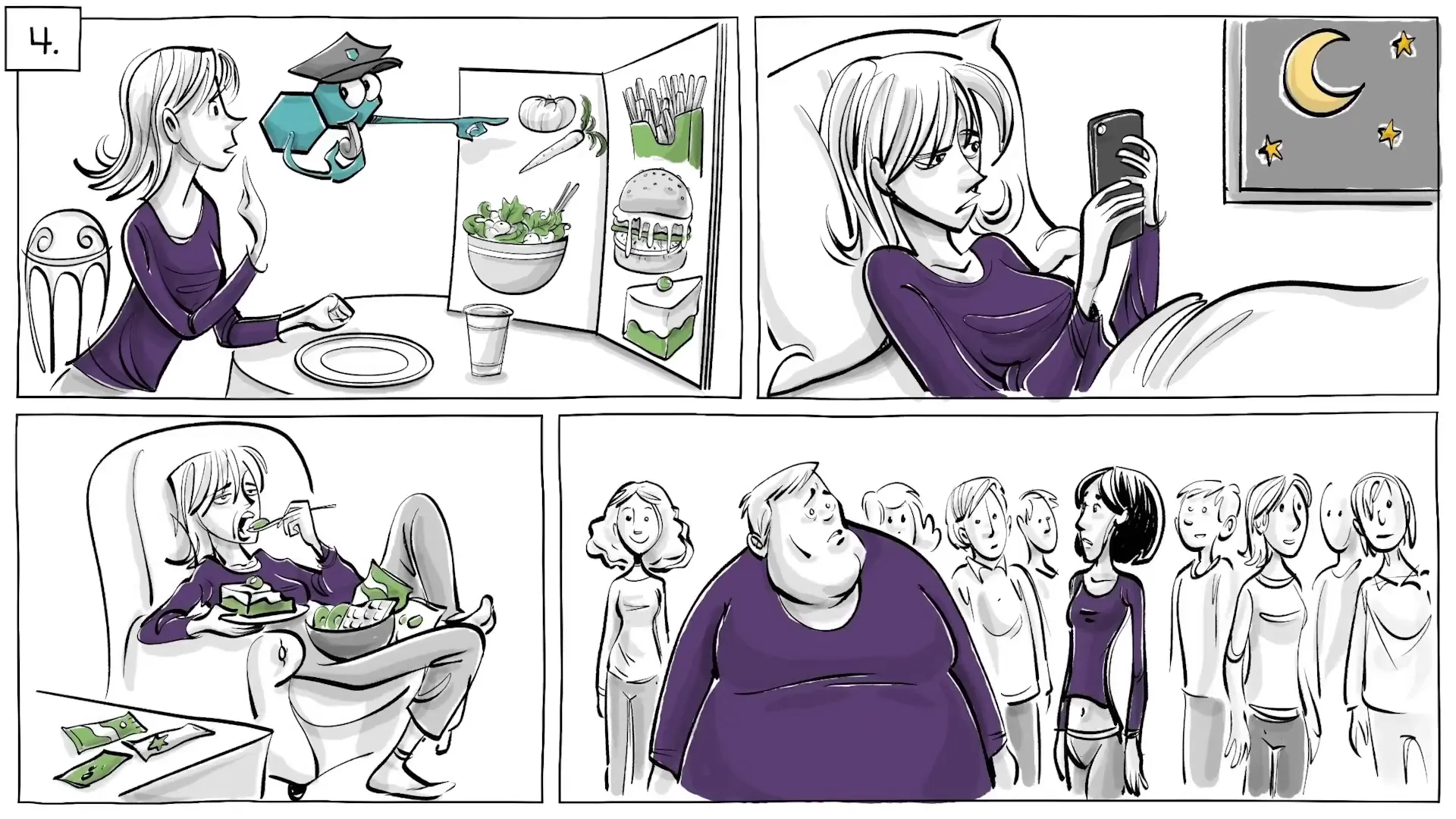
Possible Solution
The solution could be simple: adapt social norms to biological facts and allow teenagers to sleep according to their natural circadian rhythm. Some schools have done just that.
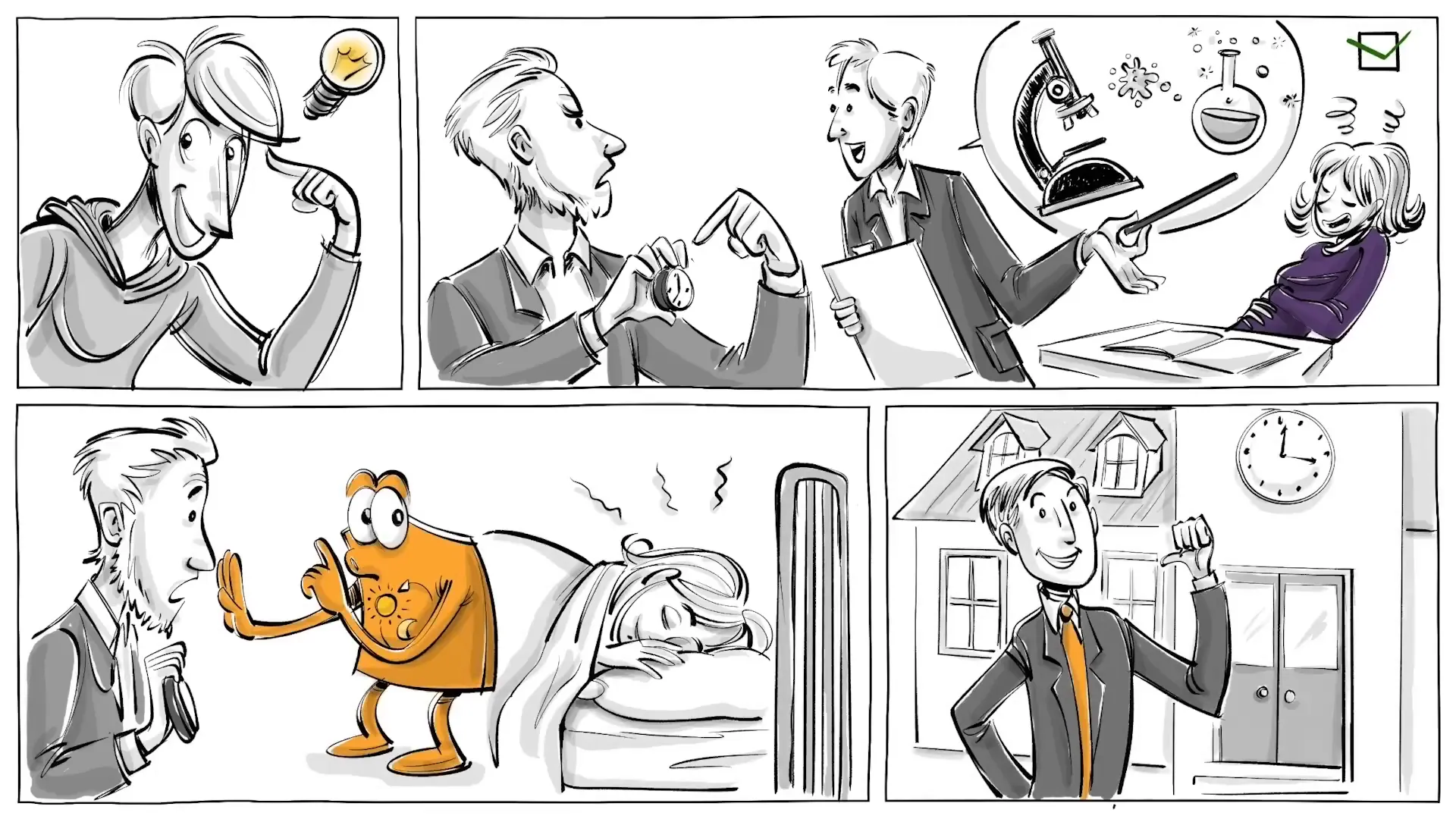
Seattle Schools’ Success
In the fall of 2015, Seattle public schools announced that it would change the school starting time from 7:50 AM to 8:45 AM to adapt to the circadian rhythm of teenagers. The result: pupils gained on average over 30 minutes of sleep each night. Later, they displayed higher concentration levels, reported better wellbeing, and increased motivation to learn.
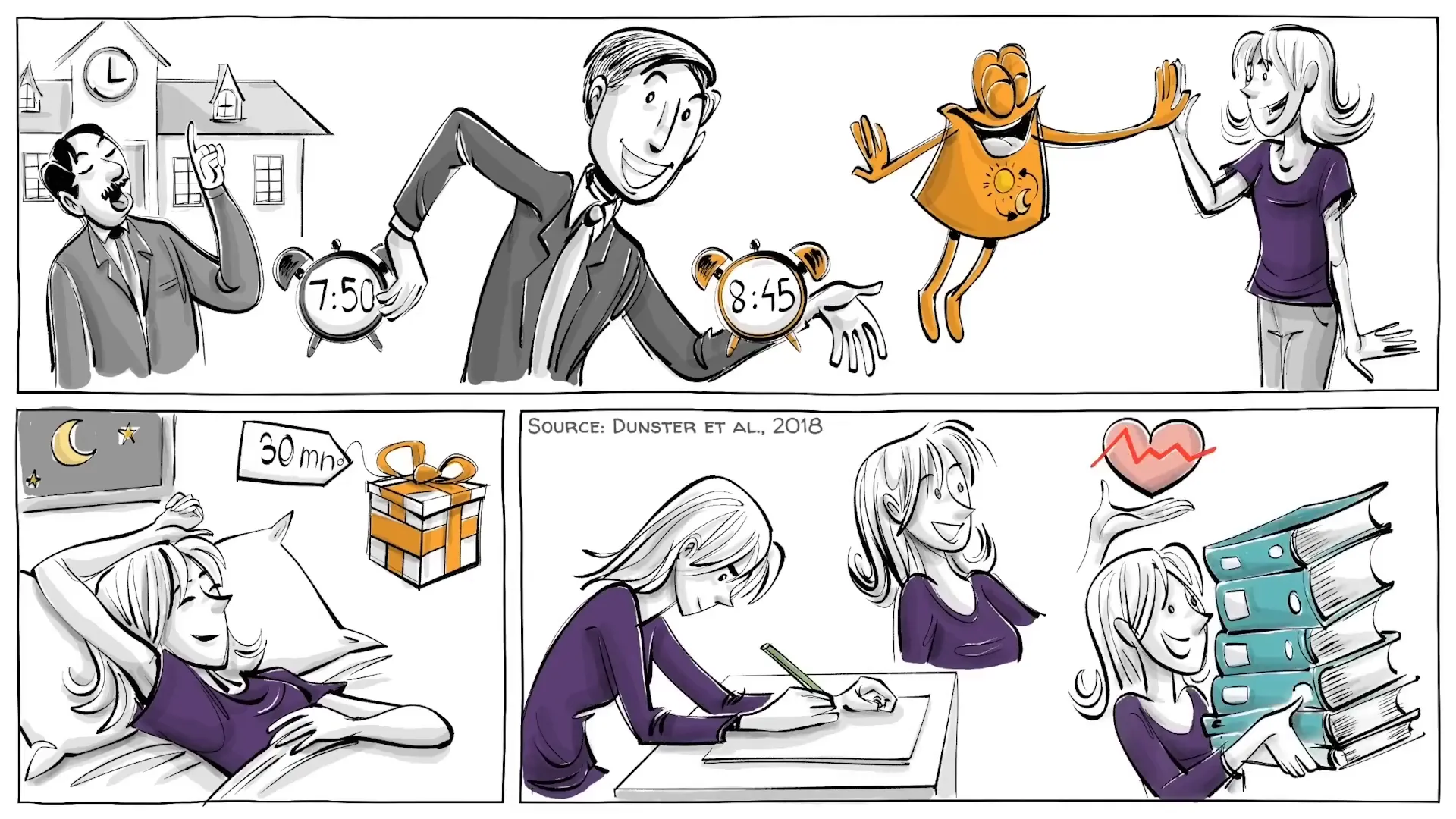
What Do You Think?
Should high schools adapt to the biological rhythm of the pupils who go there? How has your sleep cycle evolved and impacted your life?
Conclusion
The understanding of circadian rhythms and their impact on sleep and learning is crucial for improving the educational experience for teenagers. Schools need to consider these biological factors to foster better mental health and academic success among their students.
This article was created from the video Why Are Teens Tired In School [Understanding Circadian Rhythms] with the help of AI. It was reviewed and edited by a human.



